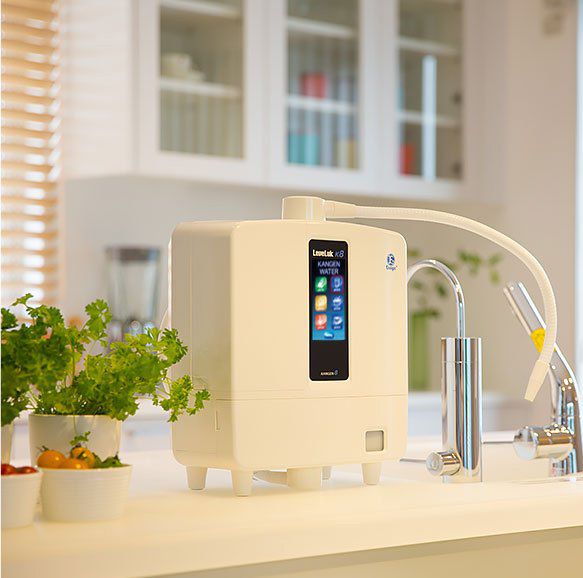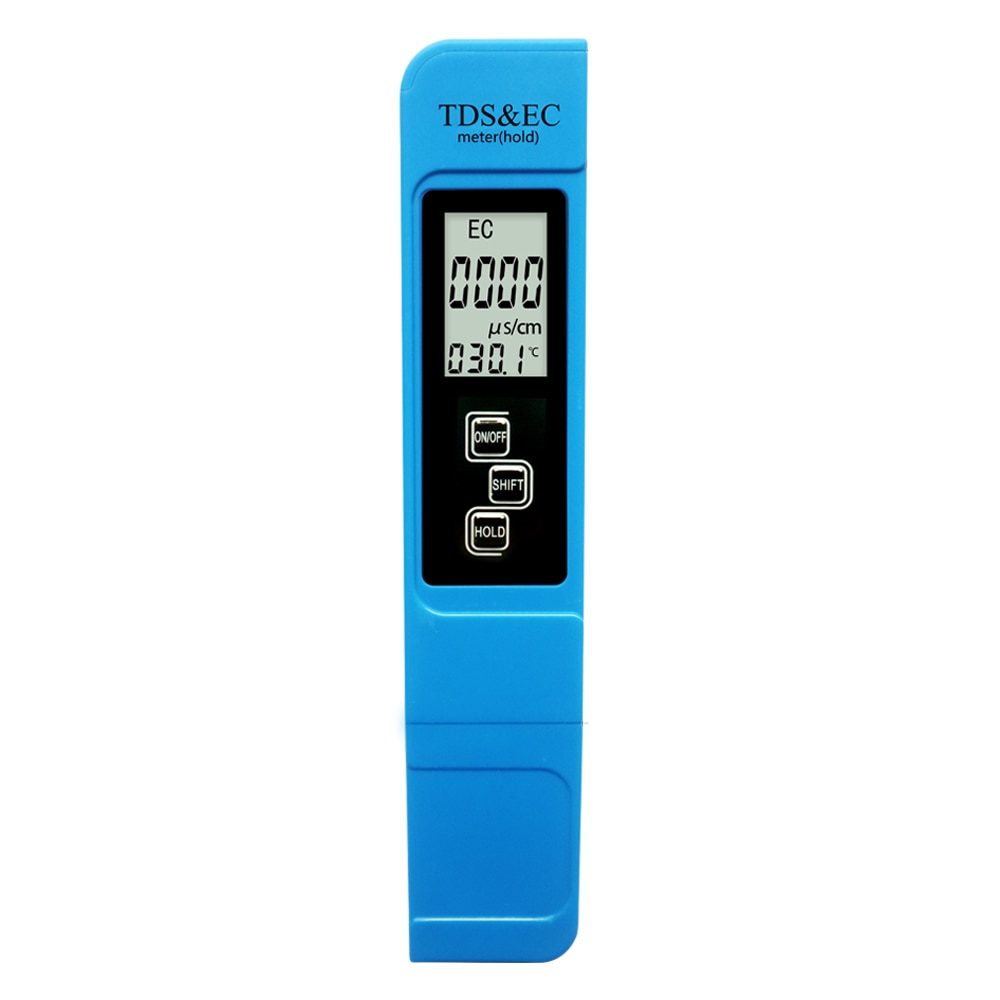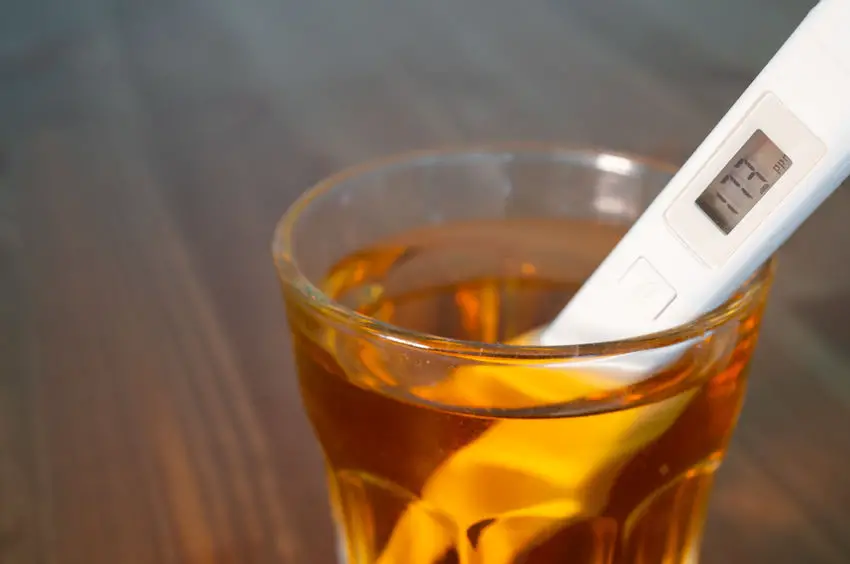Drinking water purity has become an important issue in the last few years. One Contaminant being talked about is TDS or Total Dissolved Solids in Drinking Water. What is the normal TDS of good drinking water in ppm?
According to EPA, the limit for (TDS) Total Dissolved Solids for Drinking Water in the US is 500 ppm (Parts Per Million), but normal, acceptable Levels range between 300-500 ppm. TDS is Listed by EPA as a Secondary Contaminant, which may affect how H2O tastes, & in some cases, cause disease.
TDS in Drinking Water is more of a quality indicator of what may be dissolved in the water and can only be resolved by testing. The limits differ in other countries. TDS is the total amount of mobile charged ions, including minerals, salts, or metals dissolved in a given volume of water, expressed in units of mg per unit volume of water (mg/L), also referred to as parts per million (ppm).
Introduction:
Consuming safe and healthy drinking water is a fundamental necessity for maintaining good health. One pivotal factor in determining water quality is its Total Dissolved Solids (TDS) level, typically measured in Parts Per Million (PPM). Understanding the normal TDS range in drinking water is crucial, as it affects not only the taste but also the overall suitability for consumption. This article delves into the importance of monitoring TDS levels, the implications of deviations, and how to ensure that the water you drink meets the recommended standards for TDS in PPM.
Normal TDS of Drinking Water in PPM
The EPA has established the National Primary Drinking Water Regulations (NPDWRs) that set mandatory water quality standards for drinking water contaminants. The regulations are enforceable standards called maximum contaminant levels (MCLs) which are established to protect the public against the consumption of drinking water contaminants that can pose a health risk to the public. An MCL is the maximum allowable amount of a contaminant in drinking water that is delivered to the consumer.
The EPA also established a set of regulations that is called the National Secondary Drinking Water Regulations (NSDWRs) which are considered non-mandatory for 15 water contaminants. They are established as guidelines to assist public water systems in managing their drinking water for aesthetic considerations, such as taste, color, and odor. These contaminants pose some problems but no health risk to the public consumer.
Understanding Total Dissolved Solids (TDS) in Drinking Water
Total Dissolved Solids (TDS) refer to the sum of all inorganic and organic substances dissolved in water. This includes minerals, salts, metals, cations, and anions. TDS is typically measured in parts per million (ppm) and serves as an important indicator of water quality, influencing its taste, appearance, and suitability for various purposes.
The Best Levels or Maximum Levels of TDS are different throughout the world and for whatever application you are using. Drinking Water is the same or at least very close to the same no matter the Country because of the standards established by EPA and the (WHO) World Health Organization.
Pure Water, like distilled water, is composed of 2 hydrogen atoms and 1 oxygen atom. If the sample of water is not ‘pure’, the sample’s composition can be different.
Saltwater obviously contains salt, but it can contain many other trace elements. Freshwater from different sources will contain different elements and minerals that wash into the groundwater from the Water Cycle.
Municipal Drinking Water will contain Fluoride and other chemicals added to purify water at the treatment plant. TDS is the combined content of all inorganic and organic substances contained in a liquid that is present in a molecular, ionized, or micro-granular suspended form.
TSS or Total Suspended Solids are different because they are able to be filtered, especially with the new Ultrafiltration Membranes, out of the water faster and more efficiently than solids that are dissolved.
Ensuring Good Total Dissolved Solids (TDS) in Drinking Water for Taste and Health
The 3 reasons that these contaminants are measured is
- Aesthetic effects — They can cause undesirable tastes or odors;
- Cosmetic effects — They have some effects that do not damage the body but are still undesirable
- Technical effects — damage to water equipment or reduced effectiveness of treatment for other contaminants
With these groups of contaminants, TDS is included along with some others that you may find in Drinking Water, like Iron and Manganese, Odor, and Color. These are found in Public and Private Wells with Hardness problems. EPA lists these as Nuisance Contaminants that can be corrected with further treatment.
They can also affect Industrial water used in specialty products for boilers or pharmaceutical products. In other words, they may need more treatment after coming from the Tap water and a Municipal water source. Information on Contaminants and treatments is made very available to consumers. Normally sent to customers 2 or 3 times a year or if requested, given directly to the consumers.
A Drinking Water Hotline at 1-800-426-4791. is set up Nationally to ask for the following:
- For a list of the primary and secondary contaminants for your water supplier.
- About monitoring requirements for these contaminants that your water supplier uses.
- Also, ask for a list of the health advisories available for these contaminants.
 Food and Beverage Quality: The Impact of Water TDS on Taste
Food and Beverage Quality: The Impact of Water TDS on Taste

When pondering the quality of drinking water, understanding the concept of total dissolved solids (TDS) is vital. But what’s the acceptable TDS level in drinking water for it to have good taste?
Taste, an essential factor for consumers, can be remarkably influenced by the TDS level in their drinking water. Naturally, a good taste in drinking water is often associated with an optimum TDS concentration, not just for palatability but also for overall well-being.
It’s no surprise that the taste of drinking water can vary depending on the TDS level. A TDS concentration within the range of 50 to 150 ppm (parts per million) is generally considered to offer a good taste to drinking water. This range of ppm is often acceptable and appreciated by most individuals. Beyond this range, water may begin to take on an unpleasant taste, either being too flat or too salty.
The acceptable number of TDS in drinking water for maintaining good taste hinges on the balance of minerals and dissolved particles. Too high a number and the water might taste bitter or saline, too low and it could taste insipid.
A normal TDS level that strikes the right balance appears to hover around 300 ppm for many consumers. This number is considered acceptable, and it’s where water still retains some mineral flavor without any overtly negative taste attributes.
When discussing acceptable TDS levels, it’s crucial to consider the sources of drinking water. Whether you’re sipping from a municipal tap, drinking spring water, or utilizing a home filtration system, the TDS level can influence the taste. A good rule of thumb for ensuring the TDS level in your drinking water is ideal for taste is to have it tested. A number less than 500 ppm typically signals that the water is within the acceptable range for drinking, both in terms of taste and safety.
In conclusion, when we talk about a good, normal, and acceptable TDS level for drinking water, we’re often referring to a number that doesn’t just comply with health guidelines but also pleases the palate. While taste can be subjective, aiming for a TDS level that maintains the natural essence of water while keeping unpleasant tastes at bay is what constitutes good drinking water. So, next time you’re enjoying a refreshing glass of water, remember that the normal TDS level ensures both quality and good taste, reinforcing the significance of keeping tabs on the TDS in your drinking water.
Finding the Acceptable TDS Water Level for the Best Drinking Water Experience with a Good Water Purifier
When ensuring the health and taste of drinking water, the total dissolved solids (TDS) level is a critical factor. An acceptable TDS in drinking water typically falls between 300-500 parts per million (ppm).

This range balances the need for essential minerals like magnesium and calcium, which contribute to the overall taste and dietary health benefits while keeping unwanted contaminants at bay. Good water purifiers play a pivotal role in achieving the ideal TDS level for your drink; RO water purifiers, with their reverse osmosis systems, are particularly renowned for their efficacy in this regard.
Filtration systems that combine RO with UV technology offer an added layer of protection, stripping water of both dissolved and microbial contaminants. Meanwhile, minerals can alternatively be reintroduced to RO water to maintain the desired taste and health benefits, ensuring the TDS stays at a drink-friendly level.
To verify the TDS level in your water, simply use a TDS meter to test it. If the TDS water reading is above the acceptable range, it’s prudent to invest in an effective water filter.
Ensuring that drinking water TDS levels are within the recommended parameters is not just about taste—it’s about your health. Water purifiers are indispensable tools in this quest, safeguarding against excess salts, ions, and varying levels of TDS that can adversely affect your drinking water. Ultimately, a high-quality water purifier serves as a gatekeeper, ensuring that every sip you take is not only safe but also satisfying.
The thinking is that the fewer TDS readings, the purer the water. The little TDS meters that are handed out with Water filters these days can be used as a comparison for municipally treated water or testing RO filters-Distillers or Ionizers that are being used as Home Water Treatment units.
They can test the efficiency of the treatment filters but shouldn’t be used to test for contaminants in the water quality of an unknown source. TDS digital probes don’t distinguish contaminants in drinking water. They are great for comparison testing and efficiency testing of Filters or mineral and sodium content of treated bottled water.
The digital meters that look like pens have been around in the Water Industry for 40 years and are fairly reliable. If you are looking to buy one, get a dual-purpose instrument for a few bucks more that can be used for other purposes. A few very good ones, and for your drinking water, you need a dependable one like;
Measuring Drinking Water TDS for Safe Consumption
To measure Total Dissolved Solids (TDS) levels with a TDS meter, start by ensuring the meter is calibrated according to the manufacturer’s instructions. Then, immerse the meter’s probe into the water sample and wait for the reading to stabilize. The displayed value represents the concentration of dissolved solids in the water, providing valuable information about its overall quality.
Using a TDS meter is the easiest way to see visually if an RO Water Filter-Distillation or Ionization Water Filtration unit is performing and working properly or needs new filters or maintenance.

The truest form of testing for Total Dissolved solids (TDS) in water that is done in a Professional Lab is to evaporate the water and separate it. Then weigh the remaining solids with an analytical balance. What’s leftover is any salt, metal, or mineral of unknown content for a known volume of water.
The solids are measured as mg/l or parts per/million ppm. That means if the weight left over after evaporation is 250 ppm or mg/l, then that means out of 1 million parts of water (H2O) there are 250 parts of an unknown substance.
That doesn’t mean that that substance is bad for or good for you. It only means that there is something else in the H2O other than water. For Drinking Water, if there is too much TDS in the water, you will be able to taste the difference. That’s because those excessive elements are usually minerals dissolved in the water that affect the taste.
If it is too little, then you will get the same reaction, and the taste will be affected. Distilled Water will have a flat taste with no mineral content to give it some taste. Drinking Distilled water isn’t good for you over any long period, according to researchers, but there have never been long studies on the subject that are documented.
Low TDS (total dissolved solids in water) means low mineral content in water. Some researchers believe that the minimum content of TDS should be around 150 ppm, and the maximum TDS allowable is 500 ppm. Our body requires certain valuable minerals like calcium, magnesium, potassium, etc., for good healthy functioning.
It is designed so that our body acquires these minerals from the natural universal solvent through drinking water. Mineral content can be attained from food or added to the treatment process in water treatment.
Reverse Osmosis (RO) and other Home Water filter treatments strip minerals out of the water in the process and then replace them at the end.
Purified Water is much more important in the Industrial world, where pure water is essential for parts of the Pharmaceutical or high-tech industry. Even in Aquariums and Hydroponic systems, there should be some mineral content that is needed but then also needs to be controlled for well-natural balance systems.
In Aquaponics and Hydroponics farming water, minerals, and nutrients are vital for chemical and biological processes that are used by fish and crops that need to be utilized for success. Other Industrial applications besides sustainable farming need purer water that is used for specific purposes. TDS is a great tool to use for monitoring these types of systems for greater control and operation.
Are Low TDS Levels in Water Harmful
Low Total Dissolved Solids (TDS) levels in water are generally not harmful to human health. Water with low TDS may taste fresher and cleaner. However, extremely low TDS levels could indicate a lack of essential minerals, so it’s important to strike a balance to ensure the water remains suitable for consumption.
Minerals found in water can be elements that are derived from the area where the water comes from. All water sources contain traces of compounds like salts and minerals that come from contact with the rocks and earth where the water is taken from. This is not always a bad thing. They are measured as TDS dissolved solids in water as ppm.
These compounds are sometimes acceptable. In coastal areas dissolved can be salt contact that comes from saltwater intrusion into groundwater and water from Wells. The main types of Compounds that are measured in TDS of Drinking Water are:
- Calcium and Magnesium are associated with having Hard Water. Excessive levels in water are associated with scaling and bad taste
- Iron that, if excessive, causes a bad taste in water and stains with use.
- Sodium Chloride can come from water softeners and saltwater intrusion or roadway salt washing into private drinking Wells.
- Sulfates are compounds found in Well water.
Because drinking water TDS is not a measure of any one specific contamination, it’s not regulated as a health issue by any governmental agency. It’s mainly an indicator and a reason for bad taste and appearance rather than water quality.

Water that has no measurement for Dissolved Solids may still be contaminated water, and drinking water with trace amounts of TDS or even high TDS levels could be healthy and just contain these compounds that are good, normal, and naturally found in water that will create hardness.
Another adverse effect is if all minerals are removed from the water, then water can become more acidic and corrosive. As rain washes over some areas of the country, it dissolves minerals naturally that end up in drinking water. Too much may not be healthy, and too little might be bad for the taste and corrosiveness of pipes and tanks that have long contact with the water.
For some parts of the world, any kind of TDS reading under 200 mg/L (or ppm) is considered good guidelines, and 100 mg/L is considered excellent. As the TDS level goes below this level (as the minerals are removed), the Drinking water has a lower pH and becomes more acidic or corrosive and has a negative effect besides a flat taste.
Water containing TDS concentrations below 1000 mg/liter is usually acceptable to consumers, although acceptability may vary according to circumstances. However, the presence of high levels of drinking water TDS may be objectionable to consumers owing to the resulting taste and to excessive scaling in water pipes, heaters, boilers, and household appliances (see also the section on Hardness). Tap water with extremely low concentrations considered ideal TDS levels may also be unacceptable to consumers because of its flat, insipid taste; it is also often corrosive to water-supply systems from the World Health Organization
The best way to look at water’s TDS is that pure water doesn’t have any dissolved substance in it. So as an indicator, a TDS controller test or testing probe can alarm you that there are dissolved solids in the unknown water. A general water quality indicator for TDS levels in water treatment systems by water suppliers.
It doesn’t mean that the unknown substance is dangerous; it just means that it’s dissolved in the water, and testing of the water is needed for further investigation and treatment before you consume it.
The opposite side of that thinking is that water TDS might not register anything, and there still could be a toxic contaminant dissolved in the water that can be dangerous in the solution. That is the reason that a TDS test is not a reliable way of testing Drinking Water to determine how safe it is to use.
Conclusion:
According to EPA, the limit for (TDS) Total Dissolved Solids for Drinking Water in the US is 500 ppm (Parts Per Million), but normal, acceptable Levels range between 300-500 ppm. TDS is Listed by EPA as a Secondary Contaminant, which may affect how H2O tastes, & in some cases, cause disease.
TDS in Drinking Water is more of a quality indicator of what may be dissolved in the water and can only be resolved by testing. The limits differ in other countries. TDS is the total amount of mobile charged ions, including minerals, salts, or metals dissolved in a given volume of water, expressed in units of mg per unit volume of water (mg/L), also referred to as parts per million (ppm).

References:
India Water Portal- NSF -TDS in Drinking Water
EPA-Drinking Water Regulations
FAQ’s
Q: What are Total Dissolved Solids (TDS) in drinking water?
A: Total Dissolved Solids (TDS) in drinking water are the combined content of all inorganic and organic substances contained in the water. These include minerals, salts, metals, cations, and anions that are dissolved in the water.
Q: Why is it important to measure TDS in drinking water?
A: Measuring TDS in drinking water is important for assessing its palatability and quality. An acceptable TDS level indicates the right balance of essential minerals such as calcium and magnesium, which are crucial for health, while a high TDS level may suggest the presence of harmful contaminants.
Q: What is considered an acceptable TDS level in drinking water?
A: An acceptable TDS level in drinking water typically falls between 300-500 parts per million (ppm). This ensures a good balance between essential minerals for health and taste, and the absence of harmful contaminants.
Q: How can you achieve the ideal TDS level in drinking water?
A: To achieve the ideal TDS level in drinking water, it’s advisable to use water purifiers equipped with filtration technologies like RO (reverse osmosis) systems or UV treatment options. These systems can effectively reduce unwanted solids and chemicals, making tap water safe for consumption.
Q: How can you test the TDS level of your water?
A: You can test the TDS level of your water using a TDS meter. Simply use the meter to measure the TDS content, and if it’s above the acceptable range, consider investing in an effective water filter to improve water quality.
Q: What role do water purifiers play in managing TDS levels?
A: Water purifiers, such as those with RO and UV technologies, play a crucial role in managing TDS levels. They filter out excess salts, ions, and contaminants to ensure that the TDS levels remain within the recommended parameters for safe and satisfying drinking water.

